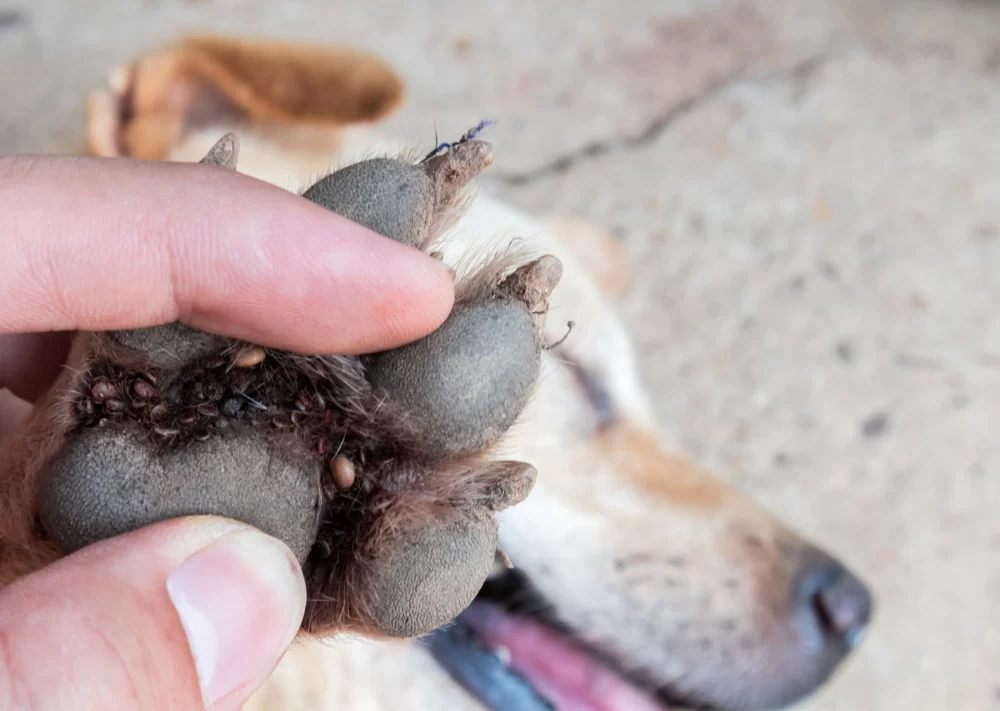How to Protect Your Pet from Ticks
As a pet owner, I know how important it is to keep my furry companions safe from the dangers of ticks. These tiny pests not only cause discomfort but can also carry serious diseases like Lyme disease and Rocky Mountain spotted fever. I remember the first time I found a tick on my dog, and it was a wake-up call to the real dangers these little creatures pose. Since then, I’ve made it a priority to learn how to protect my pet from ticks, and now I want to share my experiences and knowledge with other pet owners. Whether you're dealing with an active outdoor dog or just want to be prepared, here's everything I’ve learned about preventing and protecting your pets from ticks.

1225 Warren Ave, Downers Grove, IL 60515, USA
See Details1. Understanding the Risks: Why Ticks Are Dangerous for Pets
Ticks are more than just a nuisance; they can transmit a variety of dangerous diseases to pets. When I first encountered a tick on my dog, I wasn’t aware of the full scope of the risk. However, after a little research and a visit to the vet, I learned just how harmful ticks can be. Some of the most common tick-borne diseases include:
- Lyme Disease: Caused by a bacteria transmitted through tick bites, Lyme disease can lead to joint pain, fever, and even kidney failure in severe cases. My dog’s vet told me that Lyme disease is one of the most common tick-borne diseases in the United States.
- Rocky Mountain Spotted Fever: This disease can cause fever, vomiting, and even organ failure. Ticks can carry the bacteria responsible for this condition, which can be life-threatening if not treated promptly.
- Anaplasmosis: Anaplasmosis is another bacterial infection that can affect dogs, causing symptoms like lethargy, loss of appetite, and joint pain.
- Babesiosis: This parasitic disease can lead to anemia, fatigue, and even death in severe cases. It’s caused by protozoa transmitted by tick bites.
Knowing these risks made it clear to me that protecting my pet from ticks is essential for their health and well-being. The good news is that there are several effective ways to prevent tick infestations and protect your pet from these harmful diseases.

1225 Warren Ave, Downers Grove, IL 60515, USA
See Details2. Preventing Tick Exposure: Keeping Your Pet Safe Outdoors
Since my dog loves spending time outdoors, I realized that tick prevention had to be a part of our routine every time we went on walks or played in the yard. Here are some tips I’ve implemented to reduce the chances of ticks attaching to my dog:
- Avoid Tick-Prone Areas: Ticks are often found in wooded areas, tall grasses, and leaf piles. When we go for walks, I try to stick to cleared paths and avoid areas where ticks are likely to be hiding. I also make sure to check our yard regularly for overgrown grass or debris that might provide a hiding spot for ticks.
- Tick-Repellent Clothing: There are specialized dog shirts and protective clothing that can help keep ticks away from your pet. I invested in a lightweight tick-repellent dog vest that provides an extra layer of protection when we go on hikes or walk through grassy areas.
- Use Tick-Repellent Products: I regularly apply tick-repellent sprays or use tick collars that are designed to keep ticks at bay. These products are easy to apply and provide long-lasting protection, especially during tick season. I’ve found that using a combination of repellents works best to reduce the likelihood of ticks attaching to my dog.
3. Regularly Check Your Pet for Ticks
After spending time outdoors, checking your pet for ticks is one of the most effective ways to ensure they’re not carrying any hidden pests. I make it a habit to thoroughly check my dog’s coat for ticks after every outdoor adventure. Here’s how I do it:
- Examine the Entire Body: Ticks can attach anywhere on your pet’s body, but they are most commonly found in areas like the ears, neck, between the toes, and around the tail. I check these areas closely, using my fingers to feel for any small bumps or hard spots.
- Use a Fine-Toothed Comb: A fine-toothed comb helps me spot ticks that might be buried deep in my dog’s fur. Gently running the comb through his coat allows me to check for ticks while also removing any debris.
- Look for Signs of Tick Bites: If I find a small bump or if my dog starts scratching in a particular spot, I check more carefully for any ticks that might be attached. Ticks tend to swell up once attached, making them easier to spot.
By checking my dog regularly for ticks, I can catch any infestations early and prevent tick-borne diseases from taking hold.
4. Removing Ticks Safely
Sometimes, despite my best efforts, my dog still ends up with a tick. If you find a tick attached to your pet, it’s important to remove it safely to avoid leaving parts of the tick embedded in their skin. Here’s the method I use to remove ticks:
- Use Fine-Tipped Tweezers: I always use fine-tipped tweezers or a tick removal tool to grasp the tick as close to the skin as possible. It’s important to avoid squeezing the tick’s body, as this can release harmful bacteria into your pet’s bloodstream.
- Pull Out the Tick Slowly: I pull the tick straight out, applying steady and even pressure. It’s important not to twist or jerk the tick, as this can cause its mouthparts to break off and remain embedded in the skin.
- Clean the Area: After removing the tick, I clean the bite area with antiseptic to prevent infection. I also keep an eye on the site for a few days to make sure no infection develops.
- Dispose of the Tick Properly: I place the tick in a sealed container or a piece of tape to dispose of it safely. You can also save the tick in a container and show it to your vet if your dog starts to show any signs of illness after a tick bite.
5. Tick Prevention Treatments and Products
In addition to regular checks, I rely on several tick prevention treatments to protect my dog throughout the year. These treatments are easy to apply and help ensure that ticks don’t become a recurring problem. Here are some options I use:
- Topical Treatments: There are several topical flea and tick treatments available that I apply to my dog’s skin every month. These treatments help repel and kill ticks on contact, offering ongoing protection for up to 30 days.
- Tick Collars: I’ve found tick collars to be very effective in providing continuous protection. They release tick-repellent chemicals that last for several months, making them a convenient option for long-term prevention.
- Oral Medications: There are oral medications available that can kill ticks when ingested. These are ideal if you prefer a hassle-free solution to protect your dog from ticks.
Consulting with your vet is important when choosing the right tick prevention method for your pet. They can recommend the best products based on your pet’s health, age, and lifestyle.
Conclusion: Keeping Your Pet Safe from Ticks
Ticks are a serious concern for pet owners, but with the right knowledge and preventive measures, you can significantly reduce the risk of your pet getting infested. By understanding the risks, using tick repellents, checking your pet regularly, and removing ticks safely, you can keep your pet healthy and happy. Whether your dog is an outdoor enthusiast or spends most of their time inside, taking the proper steps to protect them from ticks will ensure they stay safe from tick-borne diseases.










